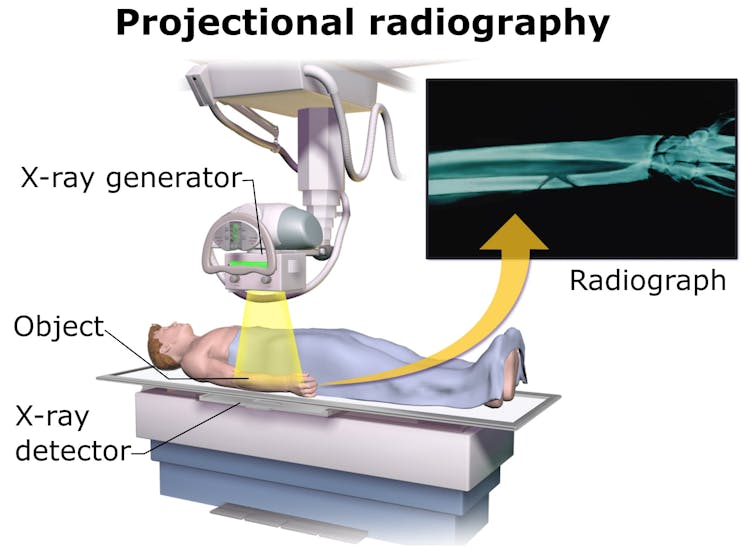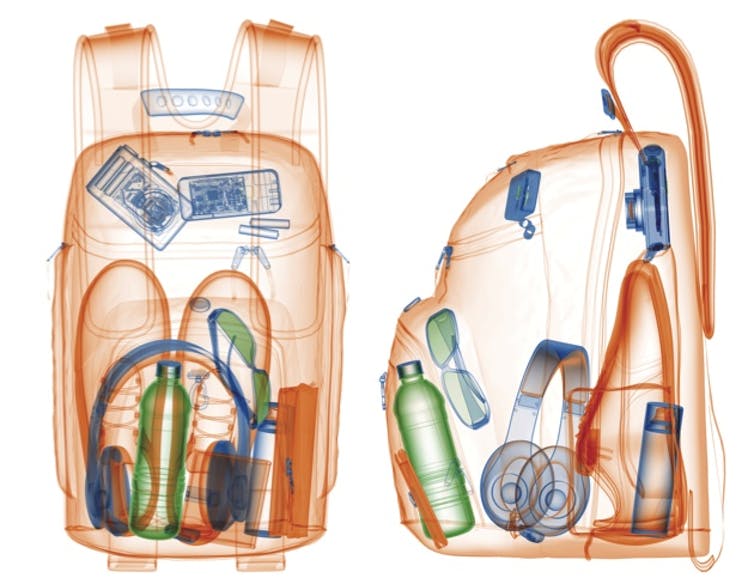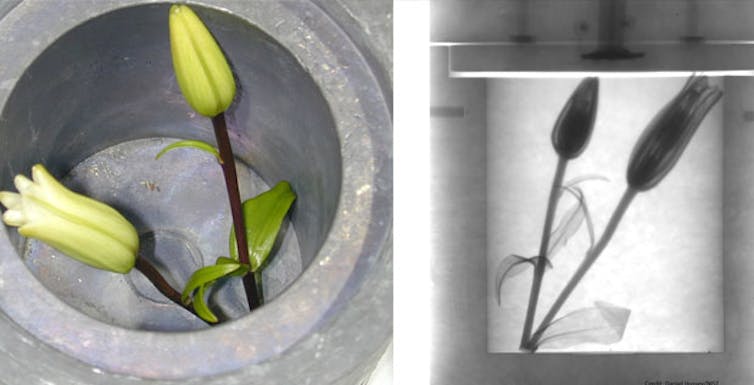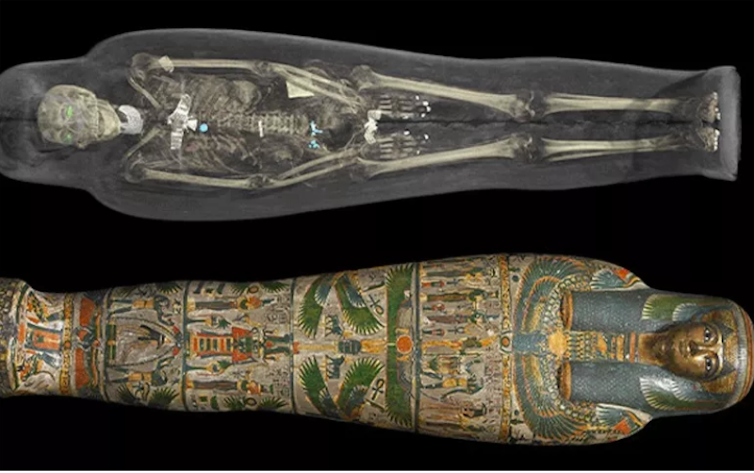
This is an article from Curious Kids, a series for children. The Conversation is asking kids to send in questions they’d like an expert to answer. All questions are welcome – serious, weird or wacky!
Dear CSIRO, My name is Finn and I’m eight. I would like to know please if making x-ray vision is possible? Thank you so much for your help. – Finn, age 8, Brisbane.
Hi Finn. Thanks for your question. X-ray vision is not only possible, it already exists! The science is called radiography.
As you know, human eyes don’t have x-ray vision. But we can use radiography machines to allow our eyes to see inside things the human eye cannot.
Radiography machines use different types of radiation (such as x-rays, visible light, or microwaves) to look inside objects. Some machines make a photograph of the object, called a radiograph, while others let you watch the object move and change in real time.
To make a simple radiograph using x-rays, for example, you need to shine your x-rays on the object you would like to see through. The x-rays pass right through the air and lighter stuff inside the object but are stopped by heavy or thick stuff (like bones). On the other side of the object you need a few fancy cameras, called “detectors”. The detectors produce the x-ray image by collecting the x-rays that make it through the object.

Read more:
Curious Kids: How do x-rays see inside you?
There are several radiography machines that you may have used before – such as a medical or dental x-ray machine. If you hurt your hand playing sport, a doctor may use x-rays to make a radiograph of your hand to see if you’ve broken a bone. The x-rays pass straight through the soft parts of your hand but are stopped by the thick and strong bones. The doctor uses the radiograph to see if the bones of your hand and fingers are broken.
At some point in your life, you will probably visit an airport. You might have been to one already. In the security line at the airport, you put your bag on the conveyor belt and it passes through an x-ray radiography machine. The operator can look right through your suitcase – without even touching it – to see what’s inside and make sure there’s nothing dangerous in there. You can then pick up your bag after it comes out of the machine without ever having to open it.

Read more:
Curious Kids: How does pain medicine work in the body?
What else can you see using radiography? Scientists and engineers have designed powerful radiography machines that can see through objects much more interesting than a suitcase.
You can use these machines to see right through cars and trucks to check what they are carrying. You can see the flow of water or oil through big metal pipes. You can shine x-rays through walls, aeroplane wings, and even nuclear reactors to look for cracks or other problems that the human eye cannot see.

Scientists and engineers also use radiography to help museums look inside very old objects that are too delicate to touch. This way, they can learn more about the object without breaking it. This has been used to see a 2000 year old mummy still inside a coffin, to see inside statues and paintings and to check whether objects in the museum are real or fake.
The catch is – these machines use computers to make x-ray vision, not human eyes. If you believe the world needs Superman-style x-ray vision, become a scientist or engineer and make it happen!
Hello, curious kids! Have you got a question you’d like an expert to answer? Ask an adult to send your question to us. You can:
* Email your question to curiouskids@theconversation.edu.au
* Tell us on Twitter by tagging @ConversationEDU with the hashtag #curiouskids, or
* Tell us on Facebook

![]() Please tell us your name, age and which city you live in. You can send an audio recording of your question too, if you want. Send as many questions as you like! We won’t be able to answer every question but we will do our best.
Please tell us your name, age and which city you live in. You can send an audio recording of your question too, if you want. Send as many questions as you like! We won’t be able to answer every question but we will do our best.
Chanel Tissot, Postdoctoral Fellow, Nuclear Engineer, CSIRO
This article was originally published on The Conversation. Read the original article.


